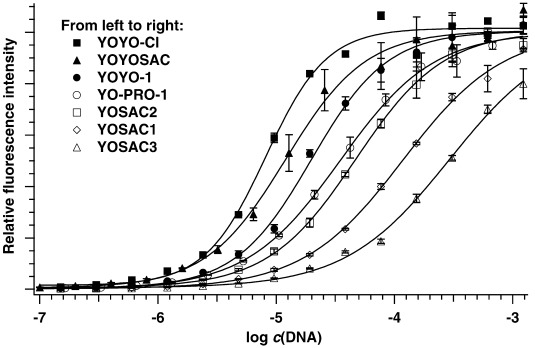Publications
-
Structure-Fluorescence Contrast Relationship in Cyanine DNA Intercalators: Toward Rational Dye Design
Alexandre Fürstenberg, Todor G. Deligeorgiev, Nikolai I. Gadjev, Aleksey A. Vasilev, and Eric Vauthey
Chem. Eur. J. 2007, 13(30), 8600-8609
 |
The fluorescence enhancement mechanisms of a series of DNA stains of the oxazole yellow (YO) family have been investigated in detail using steady‐state and ultrafast time‐resolved fluorescence spectroscopy. The strong increase in the fluorescence quantum yield of these dyes upon DNA binding is shown to originate from the inhibition of two distinct processes: 1) isomerisation through large‐amplitude motion that non‐radiatively deactivates the excited state within a few picoseconds and 2) formation of weakly emitting H‐dimers. As the H‐dimers are not totally non‐fluorescent, their formation is less efficient than isomerisation as a fluorescent contrast mechanism. The propensity of the dyes to form H‐dimers and thus to reduce their fluorescence contrast upon DNA binding is shown to depend on several of their structural parameters, such as their monomeric (YO) or homodimeric (YOYO) nature, their substitution and their electric charge. Moreover, these parameters also have a substantial influence on the affinity of the dyes for DNA and on the ensuing sensitivity for DNA detection. The results give new insight into the development and optimisation of fluorescent DNA probes with the highest contrast.
Archive ouverte / Open archive: unige:3590
